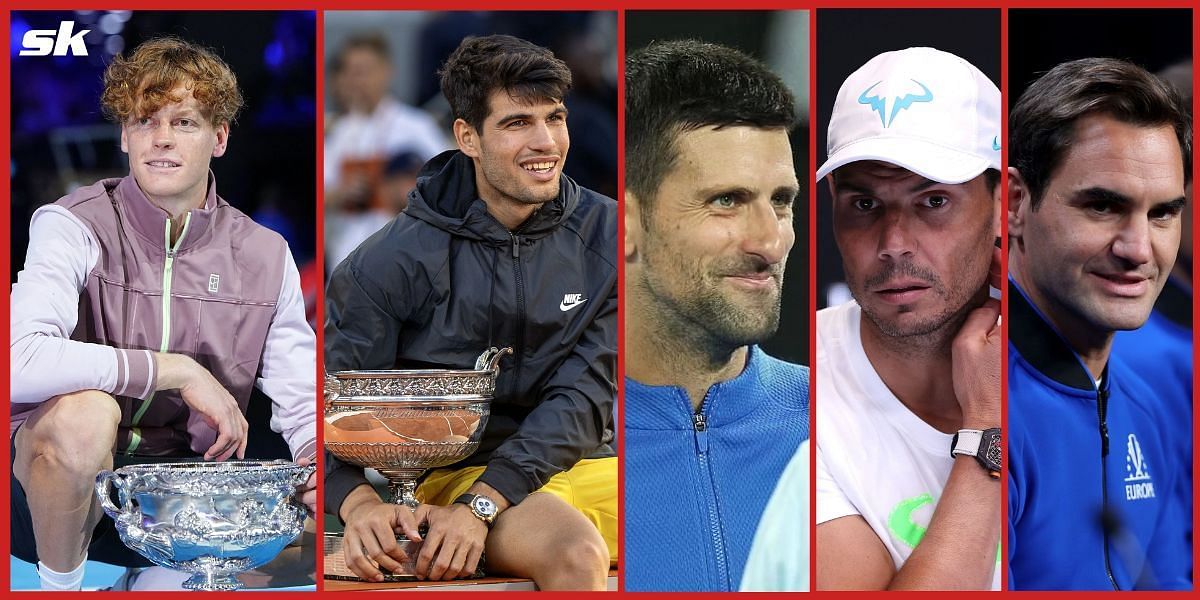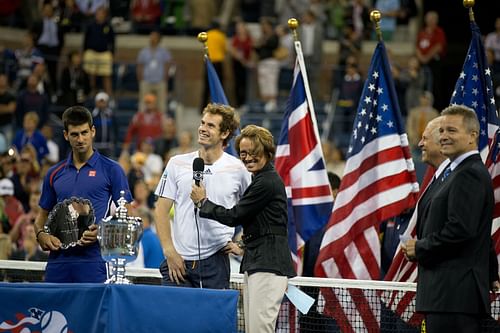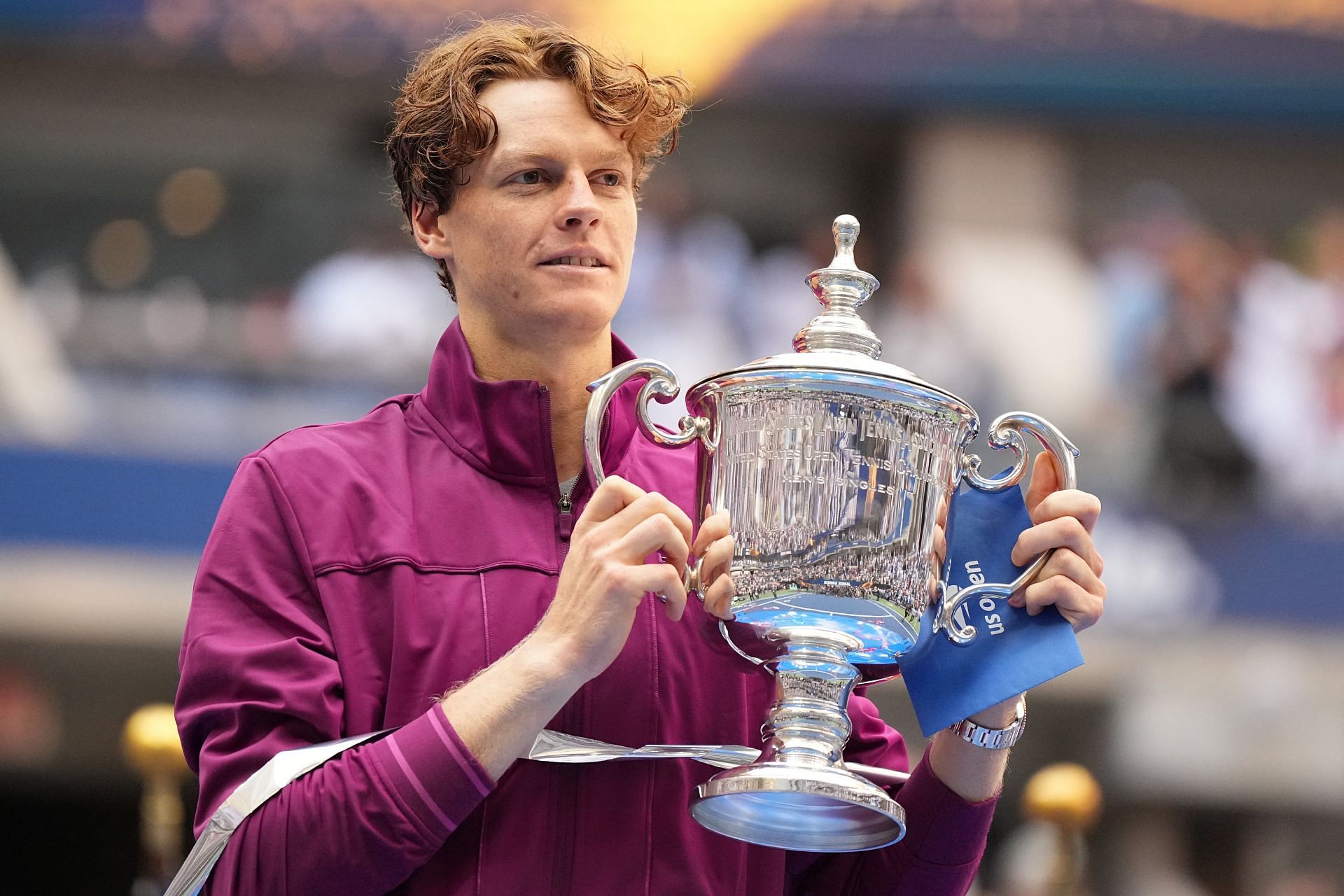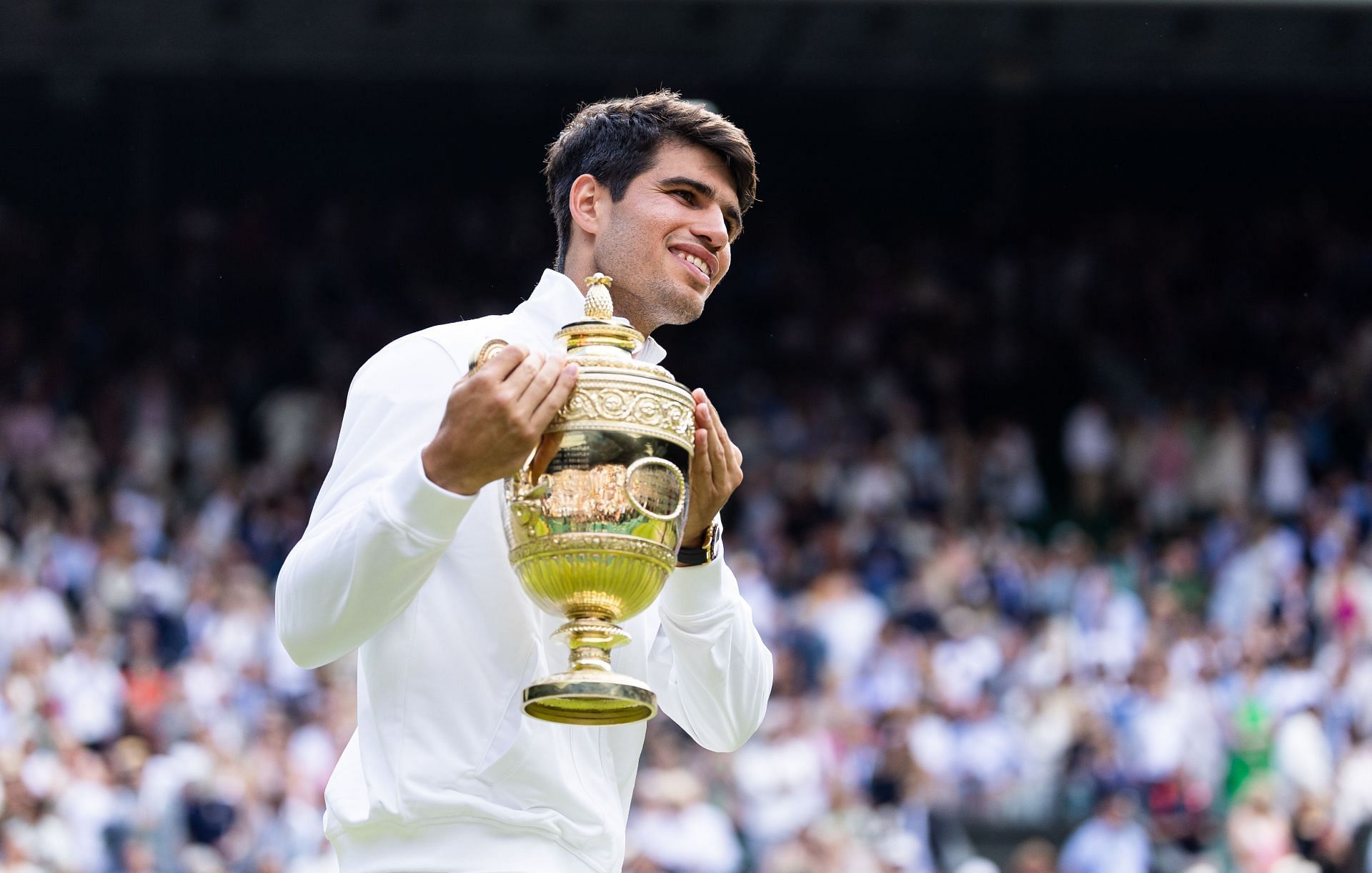
Jannik Sinner and Carlos Alcaraz win all 4 Grand Slams in 2024: Is this the official end of the Big-3 era?
Jannik Sinner and Carlos Alcaraz have swept the 2024 Grand Slams between them, marking the first year since 2002 that none of the "Big 3"—Novak Djokovic, Rafael Nadal, and Roger Federer—took home at least one of tennis’ big prizes. This begs the question: Is the "Big 3 era" over?
With Federer already retired and Nadal only managing sporadic play, the question has come up in the past as well. But the Spaniard’s resurgent 2022 and Djokovic’s dominant 2023 had allayed such thoughts but this year’s Grand Slam results could well have put the writing on the wall.
The ‘Big 3 era’ is remembered not just for the inherent talent that Federer, Nadal, and Djokovic possessed. It was also the three pushing each other to become better players that caught the imagination of tennis fans.
All three started their careers as surface experts of sorts, Federer on grass, Nadal on clay, and Djokovic on hard court. But their constant back-and-forth over much of the 2000s and 2010s saw them improve not just their own games, but that of the other two as well.
By the middle of the 2010s, all three had completed Career Slams, and another five years on, they were locked at 20 Grand Slam trophies each in their cabinets. Later, Djokovic’s 2023 surge meant that there was daylight between the three at last.
Players have challenged the trio’s dominance in the past, with Juan Martin Del Potro beating two of the three to capture the 2009 US Open. Stan Wawrinka came close to completing a Career Slam of his own.

Federer, Nadal, and Djokovic, however, were far too consistent with the results to let anyone break through the barrier. Then came Andy Murray and his exceptional results. The long-awaited first Slam at the 2012 US Open, along with two Wimbledon titles, forced the tennis world to take note and expand the bracket to a "Big 4" for a moment.
The "Big 3" won 63 of the 79 Grand Slam trophies (the Wimbledon Championships weren't held in 2020 amid the Covid-19 restrictions) in the two decades starting from 2003. That comes out to an astounding 79.7% win rate.
And despite some of the big losses that challengers have handed them, the ‘Big 3’ proved their dominance with head-to-head numbers as well. Djokovic's in their head-to-head record against Del Potro reads 16-4, Nadal's 11-6, and Federer's 18-7. Similarly, the Serb is ahead in the head-to-head against Murray 25-11, Nadal is ahead 17-7, and Federer retired with a 14-11 advantage. Wawrinka’s numbers are even worse off.
The challenge at hand, with Sinner and Alcaraz, however, is different.
Jannik Sinner, Carlos Alcaraz spearheading the change of guard

Both Jannik Sinner and Carlos Alcaraz have a close 3-4 head-to-head against Novak Djokovic, but have won their last Grand Slam matches against him. They trail Rafael Nadal but have not played him in the last two years and have not faced Roger Federer at all.
Their claim to bringing the "Big 3" to a close, however, goes beyond numbers. They have been spearheading the charge against the old guard and differ from the previous set of challengers in one significant aspect—belief.
Whether it is advancing age or the changing speed and form of modern tennis, the Sinner and Alcaraz-led generation has always believed that they are capable of beating the "Big 3."
That wasn’t the case for the likes of Grigor Dimitrov, David Ferrer, Jo-Wilfired Tsonga, Milos Raonic, Marin Cilic, Kei Nishikori, Tomas Berdych, and Dominic Thiem. Barring Thiem and Cilic, these and countless others became part of the “Lost Generation”—a set of supremely talented but Slam-less players.
Their inability to win against the "Big 3" wasn’t due to a lack of tennis skills. The battle was mental. The psychological warfare that the Big 3 unleashed for so long meant half the battle was won even before the players stepped out on the court. Their opponents looked at the reputations first, the players second.
The new generation, however, is armed with a mental fortitude that comes with the newfound focus on sports psychology. Most of them are fearless in the way they approach their tennis, and to top that, Sinner and Alcaraz have tennis skills that most can only dream of.
Federer’s love for grass, Nadal’s dominance on clay, and Djokokvic’s hardcourt menace came from specific sets of skills that they already possessed right from the start of their tennis careers.

Sinner and Alcaraz are no different. The Italian’s baseline prowess makes him a nightmare to play on hard court while Alcaraz’s dynamism, footspeed, and versatility make him a favorite on grass and clay.
Among the "Big 3", Djokovic mastered Melbourne (and later Wimbledon), Nadal Paris, and Federer Wimbledon, and it helped them keep the streak of Slam-winning years alive even when other things weren’t going their way.
Sinner and Alcaraz are headed in the same direction. Djokovic may still chase down the 25th Slam and Nadal may still get his fairytale ending at the French Open. Those two are far too good to be ruled out. But that’s pretty much all that we can expect from them: one last hurrah. Sinner and Alcaraz are ready to move ahead.
The past few years had been building up to the end of the "Big 3". The 2024 season was only the pay-off.